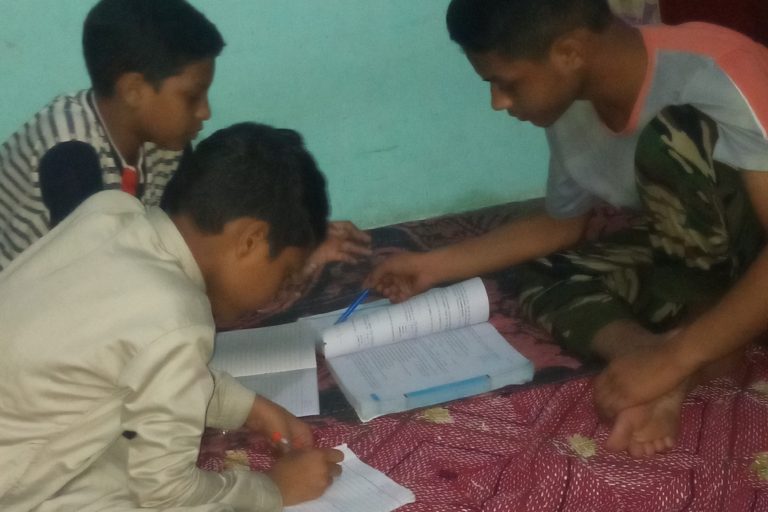By Neena Bhandari
Melbourne, 27.08.2008 (IANS): The first ever Islamic Banking and Finance Master’s course to be offered by La Trobe University in Australia has at least some overseas Indian students excited about future prospects in this fast-growing segment of global finance.
“I am very excited that the university will be offering a course in Islamic Banking and Finance (IBF). By learning about Islamic commercial laws, I can help people of my community in their development”, Mohammed Rizwanuddin from Hyderabad, who is nearing completion of a two-year Master of Professional Accounting at La Trobe University, told IANS.
“As the concept of `interest’ is considered `haram’ in Islam, there are many Muslims who need financial support for their progress. I feel that Islamic commercial law can overcome this problem”, adds Rizwanuddin, who would like to return to India and help his community despite good job prospects in Australia and the Middle East.
According to The Banker global report, in the next five to 10 years, Islamic Finance will require an estimated 50,000 employees to run the Islamic finance industry. The Islamic banking and finance market is growing at an annual rate of 15 to 20 per cent and there are more than 260 Islamic financial institutions operating worldwide.
The industry is likely to capture the savings of 1.6 billion Muslims around the world, which is estimated to grow to 2.5 billion within next decade.
“Such immense growth has brought Islamic finance to the attention of the international banking community, prompting major banks to set up Islamic financial windows to take advantage of demand for Shariah compliant finance,” Associate Professor in the Department of Economics and Finance and co-founder of the course, Ishaq Bhatti told IANS.
The Master’s course is aimed at meeting the demand for trained professionals in Islamic banking and finance sectors. “Islamic banking is a community activity based on equity and security between lender and borrower. It seeks to encourage distribution of wealth, profit and loss is shared by stakeholders on proportional basis and there is no unnecessary exposure to risk and no ambiguity in the contract”, explains Bhatti, emphasising that “maximising profit is not the major objective of this system”.
It is a growing sector in Australia with several local banks – National Australia Bank, Kuwait Finance House, HSBC and Muslim Community Cooperative of Australia (MCCA) – active in the field.
Bhatti says the Masters program will appeal to international students from the sub-continent and other countries in Asia wanting Islamic financial training in English.
“In Iran and Saudi Arabia, more than 95 per cent of all retail banking transaction is done through Islamic banking institutions. It is expected that Islamic finance will be the mainstream finance in the rest of the Gulf region in a couple of decades”, says Bhatti.
“In Pakistan, Islamic Finance is booming; in Bangladesh, micro finance is moving on Shariah compliance product. According to The Banker November 2007 issue, in Malaysia Islamic institutions are expected to capture 25 per cent of the market share of assets owned by 2010”, adds Bhatti.
Agrees Melbourne-based Chief Executive Officer of Storm Group, one of the leading educational consultants for Australia, Vamsi Parvataneni. He told IANS, “There will be high demand for this course from students coming from Hyderabad, Aligarh, Kashmir, Mumbai and Ahmedabad”.
The Master’s degree course commences February 2009 and comes dear at A$17,000 per annum for the one or two year required to complete the course, depending on prior study and experience.
The eight subjects include legal and Islamic jurisprudence, Islamic commercial law, Islamic banking, Islamic insurance and Islamic financial markets and general areas of finance.
“The new course is designed to meet a very real need. The course merges western and Islamic Finance with modern technique of finance. Islamic banks will account for 40 to 50 per cent of total savings of Muslim populations worldwide in 8-10 years”, lecturer and co-founder of the course at La Trobe, Hayat Khan, told IANS.
In 2007, India was the second largest source of overseas students with 63,604 students enrolled in Australian educational institutions. Of the top 10 source countries, the strongest growth since 2006 was from India at 63.9 per cent.
© Copyright Neena Bhandari. All rights reserved. Republication, copying or using information from neenabhandari.com content is expressly prohibited without the permission of the writer and the media outlet syndicating or publishing the article.

